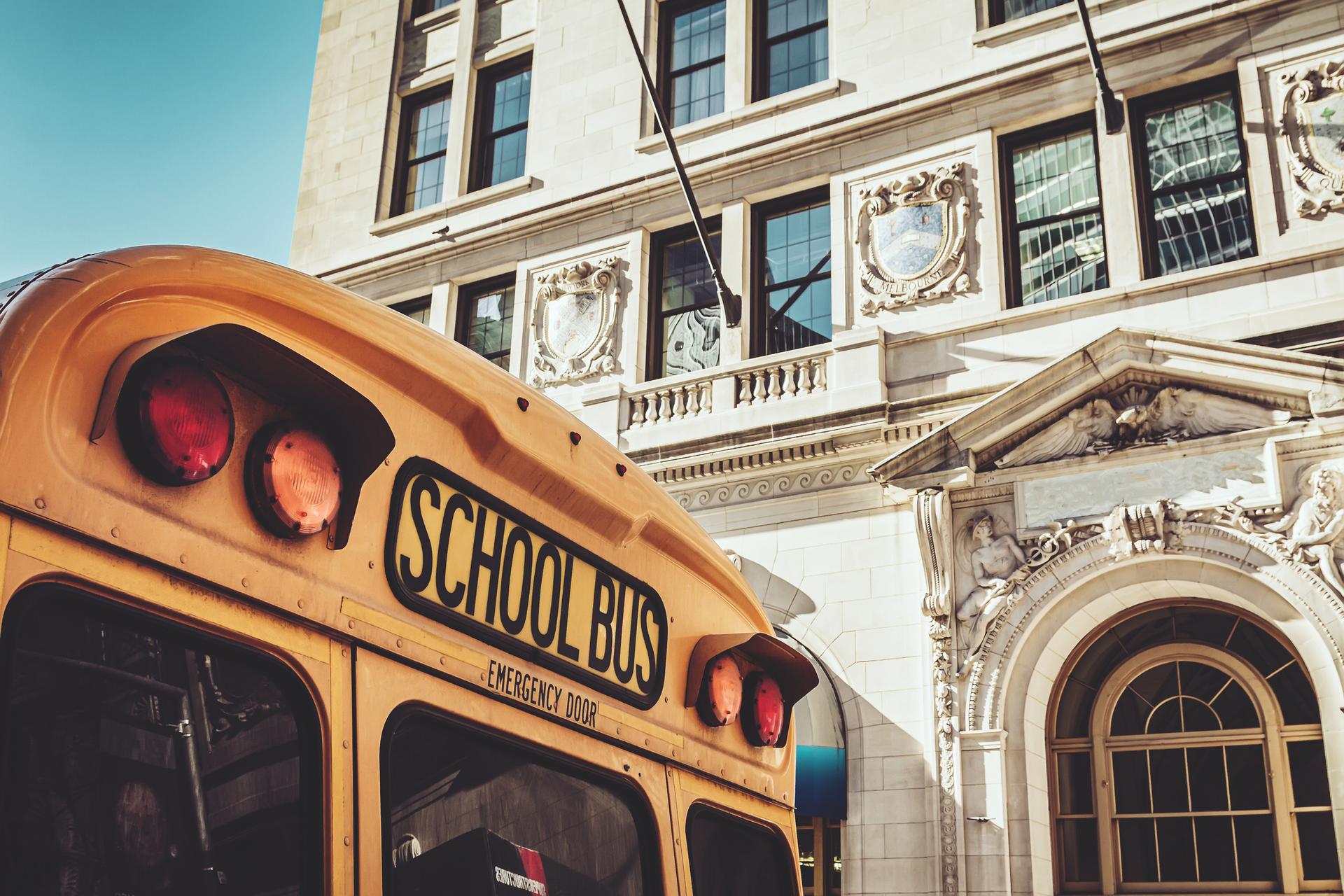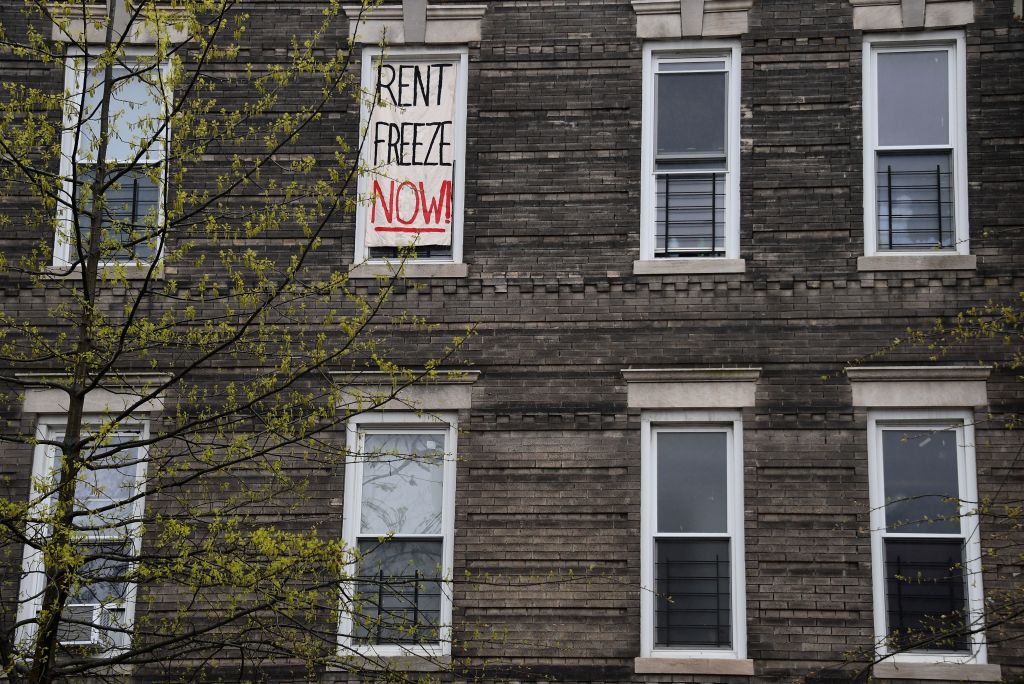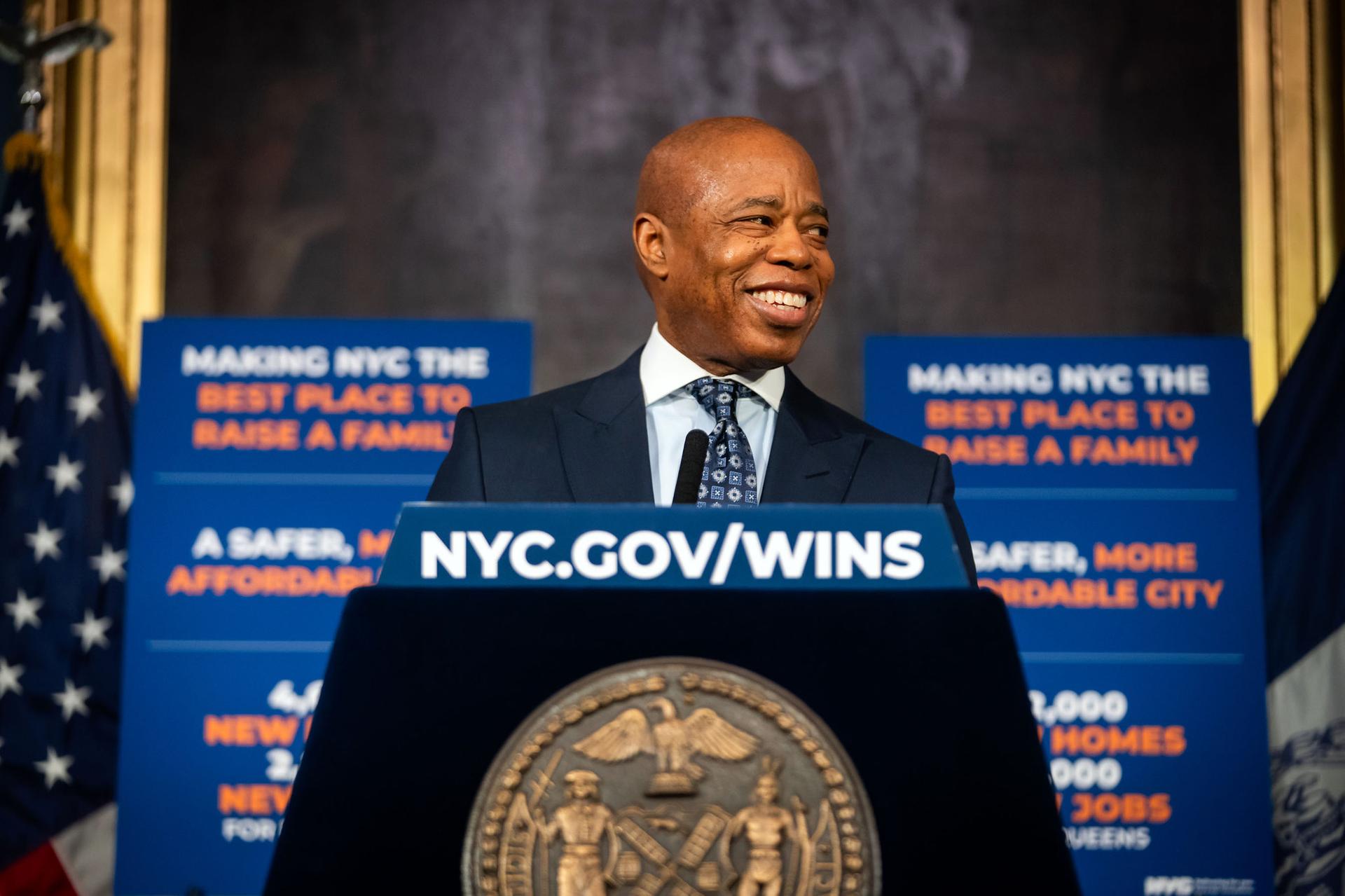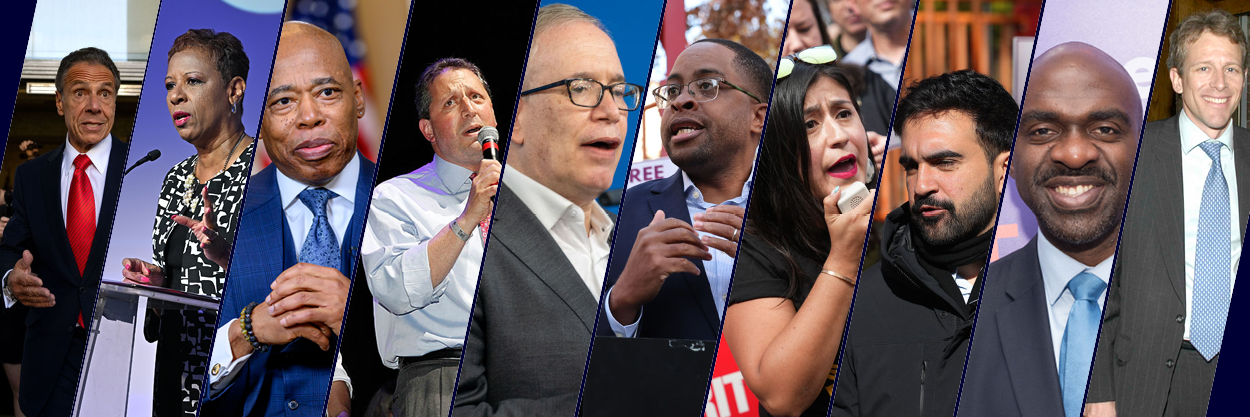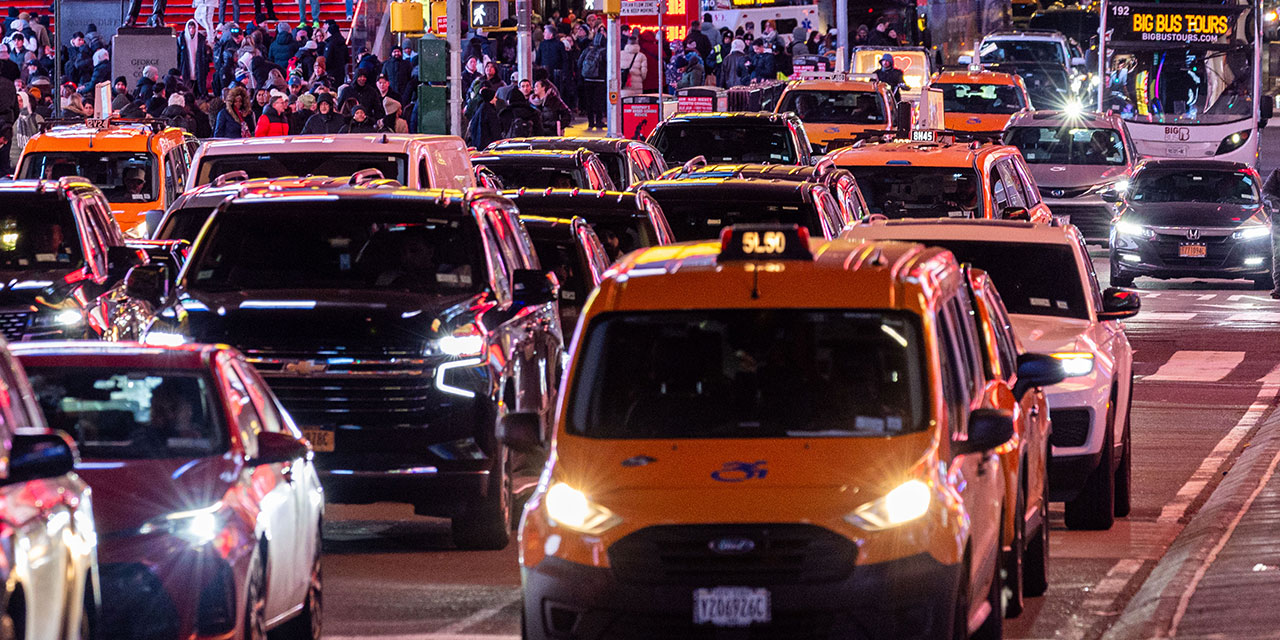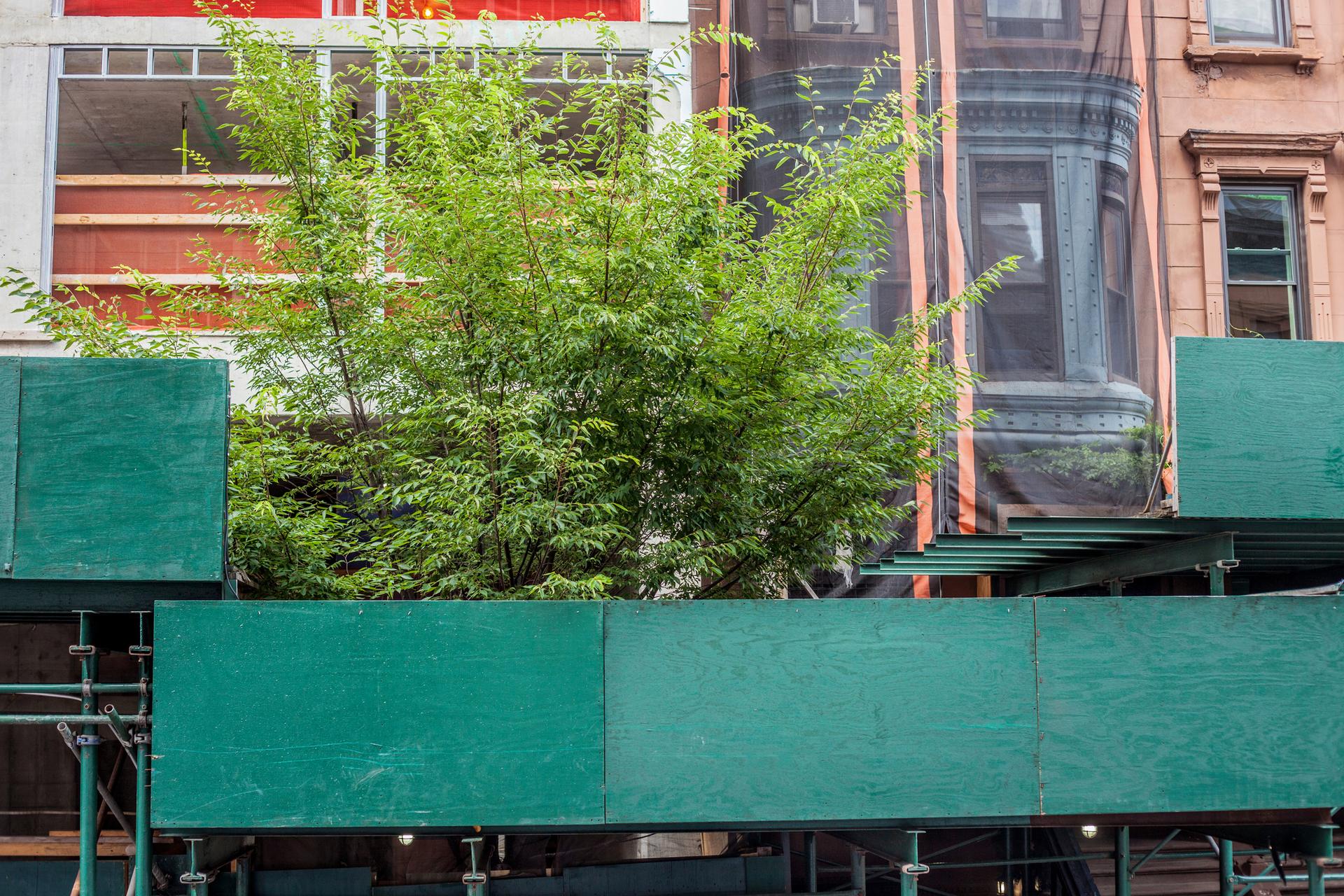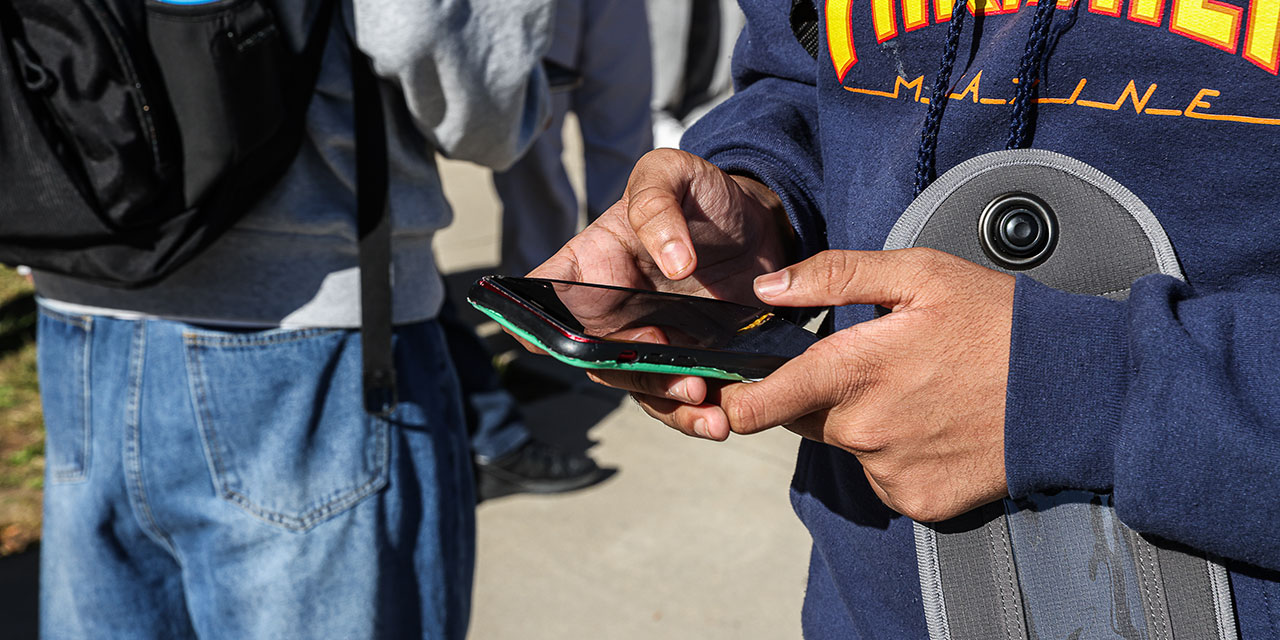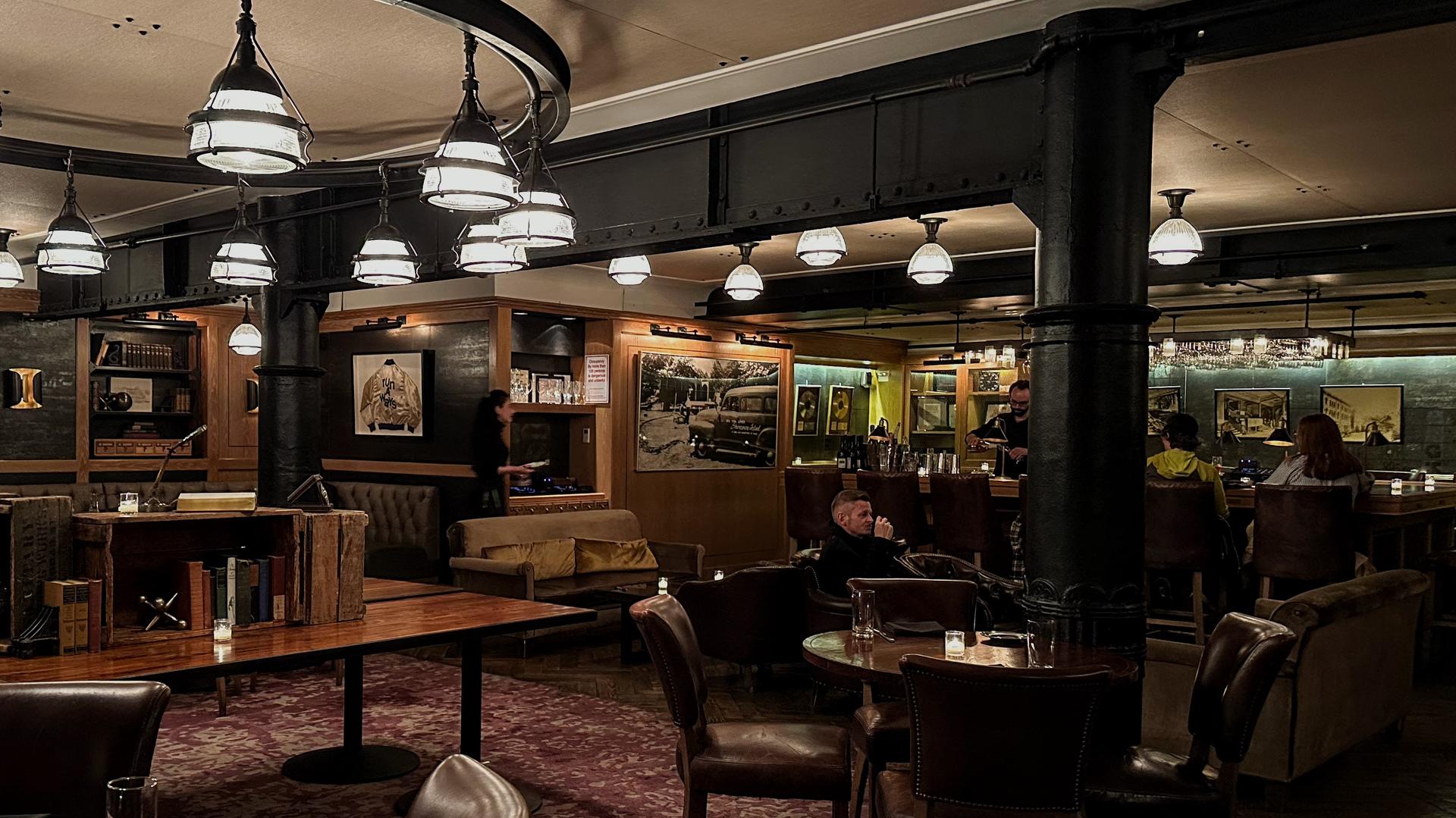|
Forwarded this email? Sign up for free to have it sent directly to your inbox.
|
|
|
Welcome back! It's 13 weeks until the Democratic primaries, and we'll talk about cellphone bans, rent freezes, and the latest mayoral polls. I also want to welcome all the Bklyner readers who signed up for The Bigger Apple! As always, let me know what you like, and what you think is missing from this newsletter. Email me. And thank you for reading! Liena Zagare
|
|
|
Crown Heights, Brooklyn. Photo Credit: ANGELA WEISS/AFP via Getty Images |
It may be the most popular, populist thing the mayor can do with the stroke of a pen: freeze the rent for more than a million New Yorkers in rent-regulated — about 44% of all rental units in the city. That promise helped Bill de Blasio get elected in 2013, and he delivered the city's first-ever rent freeze in 2015 — further distorting the housing market, and doing nothing to avert the current housing crisis.
Now the candidates of the left — Zohran Mamdani, Jessica Ramos, and Michael Blake — are all promising to freeze the rent while they work to build more housing. This is instant relief for voters — and while the landlord may be less likely to fix a leak, that may be a tradeoff worth making.
Meanwhile, every candidate is also promising to build big: hundreds of thousands of units. But building takes time, and while rents are likely to stabilize as supply and demand balance, rents are unlikely to go down.
“Voters are asking ‘what can candidates do for me right now?’” said Cea Weaver, director of New York State Tenant Bloc, to POLITICO. “A lot of new construction is maybe good for the city, but on a case-by-case basis, it’s hard to believe it’ll make a difference in your life.”
Andrew Cuomo, meanwhile, is taking the opposite direction: he now says the rent reforms of 2019 went too far — especially as they relate to limiting rent increases tied to repairs. Mamdani and Lander responded that Cuomo has “no principles,” while Myrie stands by the rent laws he voted for in Albany, POLITICO reports. The “unintended consequences” of the rent reforms were quite obvious, writes the industry publication The Real Deal.
|
Mayor on Involuntary Removals |
Mayor Eric Adams holds an in-person media availability. City Hall. Monday, March 24, 2025. Credit: Ed Reed/Mayoral Photography Office. |
The City Council released a report on how often people are taken to hospitals against their will during mental health crises. They said it’s hard to tell if the policy is working because the data is incomplete, but noted that people of color are being removed at higher rates than others, and that most removals actually happened inside private homes, not streets.
Mayor pushed back: "We are not going to say, hey, this person needs to be involuntarily removed, but hold on, they're Black, so we're not going to do it, they're Hispanic, we're not going to do it. they're white, we're not going to do it. That's not the way this game is done. If you want to play that analysis, look at the ethnicity of those who are being majorly impacted," the mayor said.
"We're going to go where the issue is, and we're not going to play race politics. Where the services are, we're going to go to. And those who are part of this analysis, they need to move out of the sterilizing environment of the City Council Chamber, and they need to go and do what we do, go on the subway system, look at the population in need. We're going to respond to that need." |
Gov. Kathy Hochul at a press conference surrounded by NY District Attorneys. Photo credit: Governor's Office |
Deadline to agree on the state budget is April 1, but there is still no agreement on Gov. Hochul's big-ticket items: making involuntary removal easier by changing mental health laws, reforming discovery laws, finding ways to fund billions of dollars for MTA fixes, and banning face masks. A bright spot -- there is agreement on banning cell phones at schools from "bell-to-bell." More on that later.
|
From Left: Andrew Cuomo, Adrienne Adams, Eric Adams, Brad Lander, Scott Stringer, Zellnor Myrie, Jessica Ramos, Zohran Mamdani, Michael Blake, Whitey Tilson. Photos via Getty Images. |
|
|
Polls: A handful of new polls capture the strength of former Governor Andrew Cuomo and the surge of socialist Assemblyman Zohran Mamdani, who is propelled largely by the under-40 voters most concerned with the cost of living in the city.
A third of voters rank crime first, while affordability — Mamdani’s core issue — is the top concern for fewer than a quarter of voters. That’s enough to take him to the final round of ranked-choice simulations, which have Cuomo winning with about 70%. All three polls this week show Cuomo as the frontrunner, while Mamdani comes in second at 10%, 15% or 18%, depending on whom you ask.
In simulations by Data for Progress and the Honan Strategy Group, Comptroller Lander gets eliminated in the 8th round, and Mayor Adams — hanging on to a base in the high single digits — in the 7th. And both of their voters go almost entirely to Cuomo once they are eliminated. Looking at how many voters put Mamdani first, the gains from February seem to show that they may came almost entirely from the ranks of undecided voters.
Fundraising: Mamdani has already reached the maximum he can use in the campaign, $8 million — the first to do so (though Lander is also expected to max out). What is intimidating is Mamdani’s army of volunteers — some 7,000, Gothamist reports — who plan to knock on one million doors. And money is power in politics: City & State took a closer look at who gave money to whom this fundraising cycle.
Debate: Al Sharpton and the National Action Network are hosting a mayoral forum next Thursday, and all candidates but Mayor Adams have RSVP’d. This is the first major forum for Cuomo, The New York Times reports. |
| |
Photo by Alex Kent/Getty Images |
Speaker Adrienne Adams took the subway from City Hall in Manhattan to Borough Hall in Brooklyn and lamented her former commute from southeastern Queens to Manhattan on the E train, POLITICO reports. “The commute was excruciating,” she said. “The equity still isn't there, as far as the express bus situation is concerned, and it's unfortunate we get a bad rap for having our cars.”
Almost 50% of NYC residents own a car. In Queens, the city's largest borough by area, more than 60% of residents own a car, while in Staten Island, the number is over 80%, according to Census data reviewed by Streetsblog— which counted the ways in which the city has been making living here without a car harder, not easier.
|
-
Real estate: Faith-Based Affordable Housing Act "would allow religious institutions to develop housing on their underutilized land," writes state Sen. Andrew Gounardes, "potentially unlocking 60,000 homes for 180,000 New Yorkers across the state. It represents the most viable and immediate housing reform opportunity for 2025."
- Public Health: Road salt is seeping into the reservoirs that supply New York City’s tap water and could render portions of it unsafe to drink by the end of the century, according to a new study commissioned by city environmental officials, The New York Times reports.
-
Education: Ahead of next month’s state reading tests, NYC elementary schools have been ordered to step up test prep, with a focus on the kids in grades 3-5 who are likely near proficiency, Chalkbeat reports. The city overhauled the literacy curriculum, and education officials are under pressure to show it is making students better readers.
- Streets: City Council approved changes to the height, the color and the ubiquity of the construction sheds that blight streets for years.
-
Housing construction could slow under city’s budget plan, experts warn (Crain’s)
-
Transportation: The MTA needs a lot more than the $500 million it is on track to collect this year through congestion pricing to fill its $68 billion five-year capital plan, currently only half funded. The agency says it collected almost $52 million from congestion tolls in February. It also managed to save $3 billion through more careful planning and project management over the past five years.
-
"Abundant evidence shows that minority contracting requirements drive up costs while doing nothing to help the truly disadvantaged," Judge Glock writes in City Journal, examining how MTA spends money. "A recent study found that every 10-percentage-point rise in spending goals for “disadvantaged” companies was associated with 25 percent higher project costs—borne, ultimately, by taxpayers."
-
Taxes: The Fiscal Policy Institute proposes more taxes to fund transit. They suggest raising the corporate tax rate or the corporate tax surcharge for the MTA region; taxing “global intangible low-taxed income” (GILTI), which reflects the overseas profit-shifting of multinational corporations, to the tune of more than $1 billion a year; and reducing the rebate of the pass-through entity tax (PTET) for up to $ 2 billion).
|
The Big Read: Smart Phone Ban In Schools |
Photo by Valerie Plesch for The Washington Post via Getty Images |
The legislature got behind Governor Kathy Hochul’s "bell-to-bell" cellphone ban in New York schools this week. The ban aims to eliminate student cellphone use throughout the entire school day to enhance focus and academic performance. Test scores in English and math remain poor, with only about half of New York's students proficient in these subjects.
Starting next school year, students will be required to hand over their internet-enabled devices upon arrival. Each school will determine how to store the phones during school hours.
Early opposition to the bill from both chambers focused on the strictness of the rules. However, as my colleague John Ketcham writes, to enforce the rules effectively, they must be simple. Where such bans are enforced, the results are promising: In Orange County, Florida, the district’s ban on smartphone use throughout the school day—including during lunch, recess, and class transitions—proved transformational. Bullying and disruptions decreased, and students reconnected with their peers in person. Overall, at least eight states enacted regulations limiting cellphone use in schools last year.
The state move comes after New York City sought to institute a citywide ban—Bloomberg tried it, de Blasio reversed it, Adams talked about it and then backed off. This bill has full support from the teachers' unions, who favor the simpler enforcement a full-day ban offers, allowing teachers to focus on instruction and making it harder for students to cheat on tests.
“I’m with the teachers and Governor Hochul on the bell-to-bell proposal," Senator and mayoral candidate Jessica Ramos emailed The Bigger Apple. "As a mother to two teenagers, I worry about the impact social media is having on their still developing brains. When students are at school, I want them focused and in the moment. I want them engaging with each other and their teachers." |
|
|
The Library at The Public. Photo Credit: Liena Zagare/Bklyner |
The Library provides a relaxed setting with solid food and drinks, tucked away on the mezzanine of the Public Theater. It's a good downtown spot to unwind, whether you're grabbing a drink or meeting over dinner, and you will not need to shout to hear each other. Open 5-11, except Mondays, at 425 Lafayette St, (212) 539-8777
I was delighted to see the Knickerbocker Bar & Restaurant on Union Place we picked last week be so heartily recommended in the latest The New York Magazine issue by Michael Kors. If you have a favorite place to meet for a conversation you'd like to share, please email me.
|
|
|
|
Eight Black elected officials from Southeast Queens put out a joint statement saying they were endorsing Andrew Cuomo for mayor. Then three of them said that, actually, they’re not doing that. And one said they won’t be ranking Cuomo at all. Jeff Coltin of Politico New York broke that story over the weekend and talked to FAQ, a podcast by THE CITY.
|
|
|
A weekly newsletter about NYC politics and policy, published by the Manhattan Institute, edited by Liena Zagare. |
|
|
Copyright © 2025 Manhattan Institute, all rights reserved. |
|
|
|

